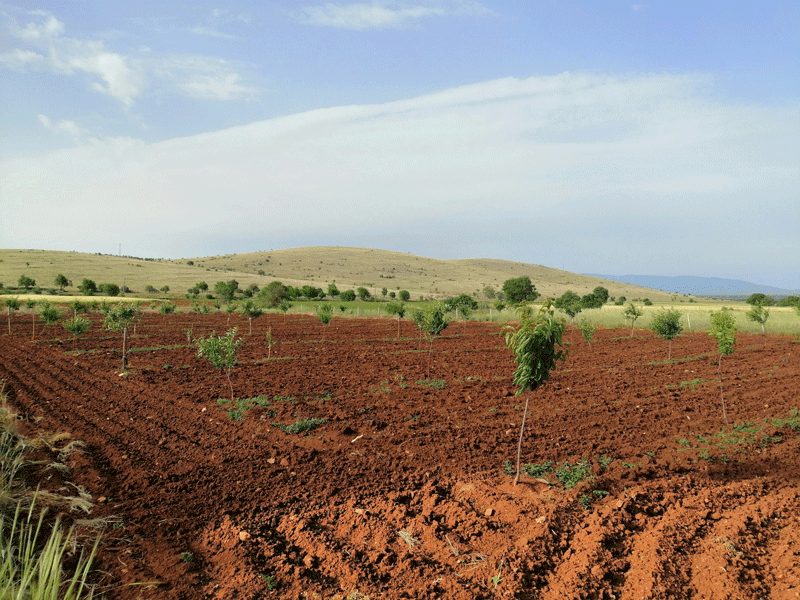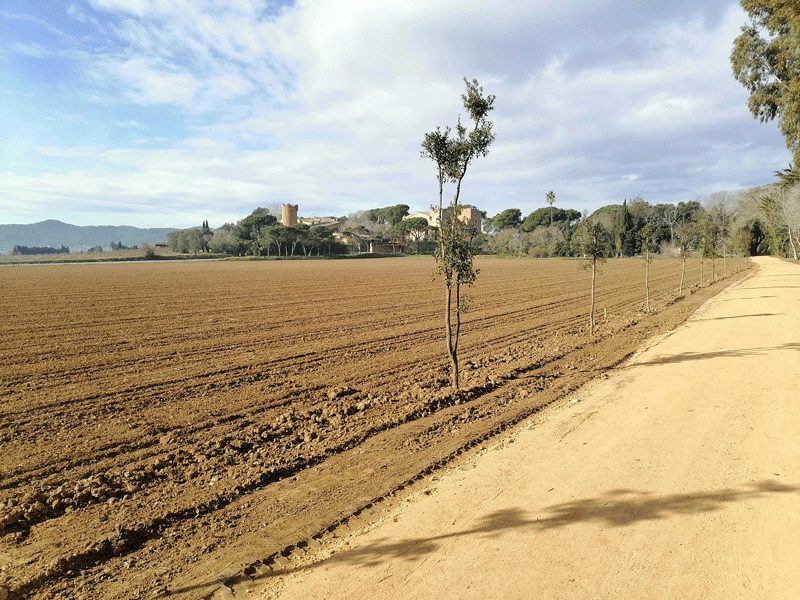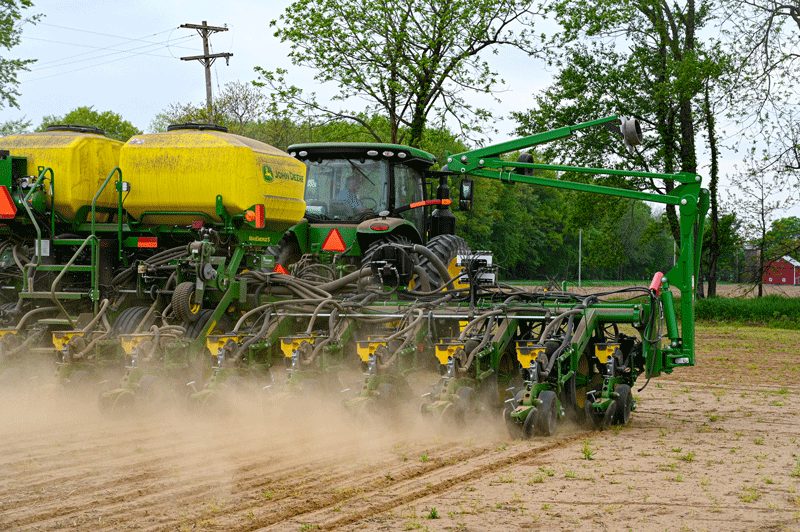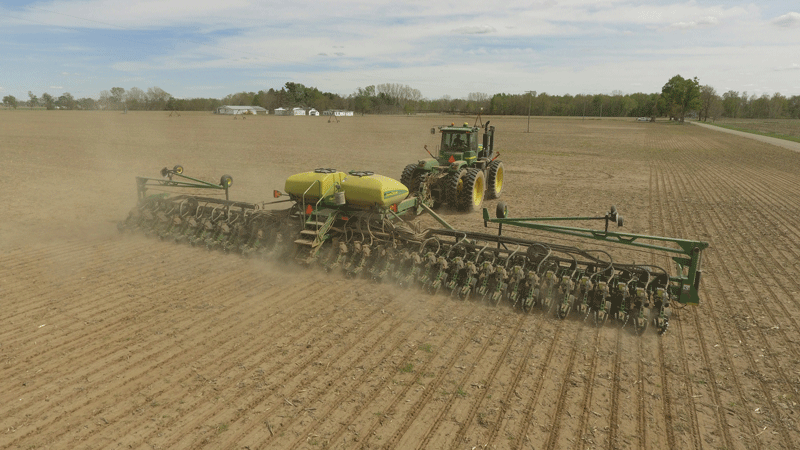Delayed Rain After Planting? 7 Critical Tips to Rescue Your Seeds before It’s too late
As a farmer, you finally got your seeds into the soil. You planned carefully, timed the planting with the weather forecast, and waited.
But the clouds have betrayed you, no rain for 10 days and counting.
Now you’re staring at dry soil and wondering, “Will my seeds survive this?”
Don’t panic just yet. While a rain delay after planting can put your crop at serious risk, there’s still plenty you can do to rescue the situation and your seeds.
In this blog post, we’ll walk you through 7 practical, smart, and effective strategies to protect your crop investment and give those seeds the best fighting chance before it’s too late.

Why Is Timely Rain So Important After Planting?
Before we dive into the rescue tips, let’s understand the problem.
When you plant seeds, whether maize, soybeans, groundnuts, or vegetables, they rely heavily on adequate soil moisture to start germinating. Without water:
- Seeds stay dormant in the soil.
- Delayed germination exposes them to rot, pests, or birds.
- If the soil is too dry for too long, germination rates drop or fail altogether.
Ideally, you want rainfall within 3–5 days after planting. If you’re now approaching day 10 without rain, the clock is ticking.
But don’t give up yet, here are 7 life-saving actions you can take immediately.
- Analyse the Soil Moisture: Don’t Rely on Guesswork
Before doing anything drastic, check your soil moisture level. Sometimes the top layer looks dry, but there’s moisture underneath, especially in sandy loam or clay loam soils.
Simple things you can do:
- Dig 3–5 inches deep in random spots across your field.
- Feel the soil, does it crumble into dust or stick together?
- If there’s some moisture below the surface, your seeds may still be okay.
If the soil is completely dry at seed depth, then it’s time to act fast.

Dry soil like this should be avoided during planting; planting should be done preferably after a rainfall, when the soil is moist

Related article:
7 Strategic Planning in Farming: Secrets Smart Farmers Use to Achieve Bumper Harvests Every Season
Stop Farming Blindly: 5 Proven Reasons Testing Your Soil is the Smartest Farming Move
6 Health-Boosting Benefits of Farming You Need to Know
-
Try to irrigate smartly. Even Small Watering Can Make a Difference when there is Delayed Rain After Planting
If you have access to irrigation or water storage, now is the time to use it.
You don’t need to flood the field just enough to moisten the topsoil and kick-start germination.
What you can try to do as a farmer when there is a delayed rain after planting:
- Use watering cans, knapsack sprayers, or hose irrigation for small plots.
- If you’re on a larger farm with drip or overhead irrigation, apply a light watering early morning or late evening.
- Target areas most prone to seed loss, like ridges or dry corners.
Even partial irrigation can buy you time until rain arrives.
Related article:
Ready to Go Big in Farming? 6 Conditions You Must Fulfil Before Going into Commercial Farming
Maize and Soybeans Master plan: How to Outsmart Pests, Weather, and Market Fluctuations This Season
Are You Making These Mistakes? 5 Seed Germination Factors You Must Get Right
-
Try Mulching Immediately to Lock in Moisture, when there is a Delayed Rain After Planting
If you planted into slightly moist soil and rain delays have now dried the top, you can trap what little moisture is left using mulch.
How mulching helps:
- Reduces evaporation from the soil surface.
- Lowers soil temperature, protecting seeds from heat damage.
- Discourages birds and pests from digging up exposed seeds.
Use grass clippings, dried leaves, rice husk, or even old crop residue to lightly cover the seed rows. Just don’t overdo it, seeds still need some sunlight and airflow.
Recommended for you:
A Beginner’s Guide to Cowpea Farming: From Seed to Harvest in Tropical Regions
3 Best Ways to Get a Good Market Price for Your Livestock
Utilizing Small Space to Make Big Profit, the Hidden Economic Power of Backyard Rabbit Farming

-
Watch Out for Pests and Birds, the Major Culprits, They Know When Seeds Are Vulnerable, when there is a Delayed Rain After Planting
Delayed rain often means seeds sit exposed in dry soil longer than usual. This makes them a snack for ants, termites, rodents, and birds.
Important steps you should take as a farmer:
- Inspect fields early morning and late afternoon.
- Scatter mild repellents (wood ash, pepper powder, or neem leaves) if needed.
- For small farms, use scarecrows or reflective tape to deter birds.
- Apply a safe seed protectant or soil insecticide (if approved for your crop) to reduce losses.
Protecting your seeds now can save you the trouble of replanting later.
-
You May Reconsider Replanting—But Don’t Rush whenever there is a Delayed Rain After Planting
Here’s the big question farmers always ask: “Should I replant if no rain falls after 10 days?”
The answer? Maybe, but not yet.
Here’s a smarter way to decide:
- Wait until rain is forecasted within the next 3–5 days.
- Check germination status after the first rain finally comes.
- Only replant patches where seeds didn’t germinate or were eaten, not the entire field.
Blindly replanting everything too early wastes time, seed, and labour. Sometimes, seeds can surprise you and sprout after 12–14 days once they get water especially with crops like maize or sorghum.
Recommended for you:
The Hidden Wealth in Your Garden: Why Planting Fruit Trees Is a Smart Economic Move
Why I’m Excited about My Next Batch of Poultry birds
5 Solid Ways You Can Source Goats for Your Farm
- You can also apply a Light Fertiliser Boost (Only After Rain Returns)
If rain eventually comes and your seeds begin to germinate, they may emerge weak or uneven due to early stress.
What you can do as a farmer:
- Apply a light dose of starter fertilizer (e.g. NPK 15:15:15 or urea) once seedlings appear.
- Use foliar fertiliser spray for fast nutrient absorption and stress recovery.
- Monitor for yellowing, stunting, or signs of poor emergence.
This post-rain support helps seedlings recover and catch up with normal growth.

-
Plan Ahead for Future Rain Delays: Learn and Adapt
This may not help you now, but it’s vital for your next planting season. Rain delay is a risk every farmer faces, but planning makes all the difference.
Smart practices for next time:
- Wait for at least 2–3 days of steady rainfall before planting, especially if you don’t irrigate.
- Consider pre-watering the field before planting (if irrigation is available).
- Choose fast-germinating, drought-tolerant seed varieties.
- Build a rainwater collection system (gutters, drums, or tanks) to help during dry spells.
Being prepared gives you confidence and reduces panic when the weather becomes unpredictable.
Steps You Can Take When There Is a Delayed Rain After Planting
| Problem | Solution |
| The soil is dry | Check the moisture before acting |
| No rain for 10 days | Irrigate lightly if possible |
| Topsoil drying fast | Mulch to preserve moisture |
| Seeds exposed | Watch for pests and birds |
| Unsure about germination | Don’t replant too early |
| Rain finally comes | Support seedlings with fertiliser |
| For the future | Plan with smarter timing and tools |
Conclusion
Don’t Lose Hope, Just Act Wisely
Rain delays after planting are frustrating. You feel stuck, your money, seeds, and effort are all in the ground, and nature isn’t cooperating.
But remember, farming is a game of strategy and patience, not just luck. By acting early, thinking smart, and staying calm, you can still turn things around even when the rains come late.
So before you rush to replant or give up, follow these 7 practical steps.
Sometimes all your seeds need is a little help to spring to life, and you’ll be glad you didn’t give up too soon.







